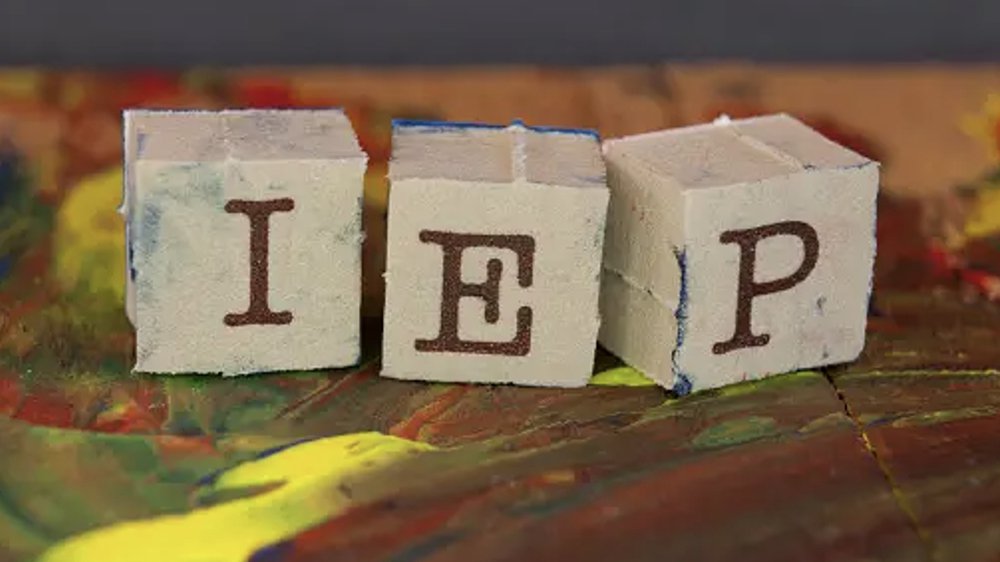“If you’ve read one IEP, you’ve read them all.” It may not be literally true, but there is a strong feeling among many parents and teachers that the “individualized” part of an Individualized Education Plan (IEP) is not accomplishing what it could and is far less personalized than it ought to be. For instance, extended time on tests and preferential seating, while beneficial for some, are now almost universally applied, irrespective of the student’s specific challenges and strengths.
Part of the reason for the similarity among IEPs is the almost single-minded focus in school systems on standards and what every student should know or be able to do at a particular grade level. There is undoubtedly logic in that approach; if a student has not mastered some standards, then we need to identify them and put something in place to help the student meet them. However, there are two basic assumptions of that approach that seldom are examined or challenged explicitly. The first is – the “what” of learning that drives the process. And the second is – the starting point is what students can’t do rather than what they can do
Another reason for the similarity across IEPs may be the emphasis on compliance with legal and regulatory requirements. Not that compliance isn’t important, but my email inbox is full of training opportunities on compliance in the IEP process. I don’t think I have ever received an email about improving the effectiveness or outcomes for students. Too many parents tell us that the focus of IEP meetings and evaluations seems skewed towards fulfilling procedural requirements. Discussions are often centered on ticking off compliance checkboxes rather than delving into the unique educational needs of the student.
Focusing on standards and the “what” of learning may also be why goals in IEPs tend to read like procedures for a car inspection.
- Aaron will decode CVCC and CCVC words (the Cs stand for consonants and the Vs stand for vowels) with 80 percent accuracy.
- Janice will identify triangles, rectangles, circles and pentagons by the number of sides and vertices in 4 out of 5 opportunities.
These objectives are specific and measurable, but they also focus on incremental progress, as if reading or math were a linear process of acquiring discrete sets of skills, and as if all anyone cares about is whether Aaron can read words like back and plot, rather than whether he finds meaning in what he reads. The implications for support are just as important but also tend to remain unexamined. If Janice can only identify shapes by the number of their sides and vertices in 3 out of 5 attempts, then the standard response is to teach and reteach the material. It assumes that more instruction and practice will lead to mastery of the topic, that only more instruction and practice will lead to mastery, and further that more instruction and practice are best and most efficient ways to get Janice to 4 out of 5 correct attempts.
Unfortunately, as we often see, Janice’s ability to get her shapes right four times doesn’t really mean that she understands the shapes or what to do with them. And it doesn’t mean that she is best served, as a unique learner, by the time and effort expended by her teacher and by Janice herself in repeating the instruction. The heart of the issue lies in failing to address the “how” of learning as well as the “what” of learning. The “how” of learning refers to the fact that each student learns differently because each student (and each human on the face of the earth) has cognitive strengths and weaknesses. We always say strengths and weaknesses, rather than the other way around, because it empowers students.
We read a lot about best practices with IEPs to empower students. When I asked ChatGPT (an amazing tool but largely reflective of conventional thinking) about how to empower students with IEPs, here’s what I got back,
“Students should be encouraged to understand and articulate their strengths, interests, and learning preferences. This can be achieved by incorporating student-led meetings where they set goals and discuss strategies that work best for them. Additionally, regular check-ins where students reflect on their progress and adjustments needed in their IEPs can foster a sense of ownership and responsibility towards their learning journey.” (Chat GPT)
This approach reminds me of a quote I came across in my Facebook feed this morning. Alas, I can’t find it now so I’m going to coin my own version. “Opinion is what you have before you acquire knowledge.” Students may absolutely have opinions about their own IEPs and their needs, and those are important. Their teachers also have opinions about their students’ needs, and those are relevant, as well. But in most cases, neither the students nor the teachers know what a student’s cognitive strengths are or how to use them. If a student doesn’t know what their learning strengths are, they cannot effectively self-advocate for the opportunity to use them.
If student involvement, engagement and empowerment are important, then an IEP could be an opportunity to help a student excel in some domain and recognize that they are excelling, not be reminded at every turn that they are lagging behind in the ones that the system has chosen to measure and define mastery as 4 out 5 tries. When a student understands how they learn, they can use those strengths to help them advance more quickly and effectively, than if they are being instructed and trying to use the same learning techniques that work for others.
When we say that Janice may not be best served as a learner by repeated instruction on shapes, their sides and their vertices, we mean two things. First, we mean that her unique cognitive profile may suggest a different set of strategies to enable better learning (and therefore better retrieval) of the knowledge. And second, we mean that Janice can actually become a better learner. That is, we can help her build her cognitive skills, the mental processes that equate to learning capacity. When we do that, she can spend less time and less effort on learning across the board, rather than more time and more effort on learning discrete tasks.[cs1]
The current journey towards empowering students seems headed down a path that may endanger the uniqueness and needs of the learner. There is a different pathway available, one that reimagines the approach and that focuses on the “how” of learning, rather than the “what,” and has the potential to transform the educational experience for countless students.
About the authors

Betsy Hill is President of BrainWare Learning Company, a company that builds learning capacity through the practical application of neuroscience, helping parents unlock their child’s learning potential. She is an experienced educator and has studied the connection between neuroscience and education with Dr. Patricia Wolfe (author of Brain Matters) and other experts. She is a former chair of the board of trustees at Chicago State University and teaches strategic thinking in the MBA program at Lake Forest Graduate School of Management where she received a Contribution to Learning Excellence Award. She received a Nepris Trailblazer Award for sharing her knowledge, skills and passion for the neuroscience of learning in classrooms around the country. She holds a Master of Arts in Teaching and an MBA from Northwestern University. Betsy is co-author of the new book, “Your Child Learns Differently, Now What?”

Roger Stark is Co-founder and CEO of the BrainWare Learning Company. Over the past decade, he championed efforts to bring the science of learning, comprehensive cognitive literacy skills training and cognitive assessment, within reach of every person, and it all started with one very basic question: What do we know about the brain? From that initial question, Roger Stark pioneered the effort to build an effective and affordable cognitive literacy skills training tool, based on over 50 years of trial and error through clinical collaboration. He also led the team that developed BrainWare SAFARI, which has become the most researched comprehensive, integrated cognitive literacy training tool delivered online anywhere in the world. For more, follow BrainWare Learning on Twitter @BrainWareSafari. Roger is co-author of the new book, “Your Child Learns Differently, Now What?”










